What Is Tourette’s Disorder?

Posted in: Grade School, Teenagers, You & Your Family, Young Adults
Topics: Mental Illness + Psychiatric Disorders
Tourette’s disorder has also been called Tourette’s syndrome.
It has also been called simply Tourette’s.
In the general press, it has been called a modern day form of possession (minus the religious implications), a weird psychosis, and a barometer among those who suffer from the syndrome for how stressed they happen to be feeling.
I first became interested in the disorder because of a professional baseball player named Jim Eisenreich. He had his major league debut in 1982 for the Minnesota Twins, but I first found out about him when he was signed by the Kansas City Royals (my hometown team) in 1987.
At the time, Eisenreich was coming back to baseball after a two-year hiatus for a host of psychological problems. He had crushing anxiety. He sometimes felt like he couldn’t breathe. And, he suffered from and openly took medication for this disease called Tourette’s syndrome. In fact, he now runs a foundation dedicated to helping children overcome the obstacles associated with Tourette’s syndrome. You can read all about Mr. Eisenreich in this piece from The New York Times written back in 1987.
Eisenreich caught my attention because he was so open about his struggles, and because he played for my home team (of course). I was proud of the Royals for signing him; plus, he happens to be a really, really good baseball player.
About 10 years later, as I was in the middle of my psychiatry residency, I found myself wanting to learn as much as I could about the history of Tourette’s syndrome. I even wrote a number of articles about the evolution of this odd disease.
As you might imagine, 500 years ago, people who displayed strange movements and made odd noises were thought to be possessed. Although the typical treatment for possession was burning at the stake, a young boy who grimaced whenever he was in church was noted by two very prominent priests in Germany to retain his reasoning more than they were accustomed to seeing in other individuals who suffered from demonic possession.
Here was something really special, I thought: we have a long and sordid cultural history of viewing psychiatric illnesses as demonically-driven (we still do to this day, in fact). But, here was a case, more than 500 years ago, where a couple of priests thought that the demonic possession looked different. They didn’t burn the kid at the stake; instead, they watched him, and noticed that his strange movements would eventually dissipate. Reportedly, he went home safely with his father.
Tourette’s, therefore, is a disease that 500 years ago could get you burned at the stake—but for the careful observation of some somewhat enlightened clergymen. Tourette’s was also a disease that could remove a great player from Major League Baseball—but also bring him back again with proper treatment.
In other words, Tourette’s disorder is intricately linked to the culture in which it exists.
All of this begs the obvious question:
What the heck is Tourette’s syndrome?
Tourette’s syndrome is a syndrome name after a French neurologist named Giles de la Tourette who in the late 1800s decided that there was a new kind of movement disorder. Upon presenting his findings to a prominent physician named Charcot, Charcot was so impressed, that he named this new disorder after Tourette himself.
But, Tourette’s syndrome is really a smaller subset of a larger category of what are called tic disorders. A “tic” is a sudden, non-rhythmic movement or vocalization that appears to worsen with stress. You can read about tics at the CDC’s site devoted to these issues at this link. Although you need to have both motor and vocal tics to meet the criteria for Tourette’s syndrome, it makes more sense to talk about tic disorders in general.
If you look around, you’ll probably notice that tics are everywhere. People on the bus blink in odd and asynchronous ways. You might hear someone clearing his or her throat over and over again. Sometimes you might hear hooting.
Complex tics—that is, tics with perceived meaning—are rare. A sudden and unpredictable raising of the middle finger is an example of a complex motor tic. These kinds of tics don’t often happen randomly. Instead, they happen at the most socially inopportune moments. Someone with a complex tic is more likely to give someone the bird to a guest at a wedding than to a stranger on the street. Coprolalia, the shouting of profanities, occurs in less than 20% of those who suffer from tic disorders; but, when someone shouts the “F” word in the middle of the opera, folks take notice.
This is what makes Tourette’s syndrome fascinating but also potentially painful for those who suffer from its symptoms. Tics are semi-voluntary, which means you can hold them in for while—but, most people with tics eventually need to express them. I had one patient tell me that suppressing a tic is like suppressing a sneeze. Another told me that he feels like a balloon is blowing up inside him just before the tic comes out.
From a neurobiological standpoint, we know that tics are related to increased excitatory neurotransmitters in the basal ganglia of the brain. That’s a fancy way of saying that norepinephrine and dopamine are prominent players in this syndrome. Medications that treat tics, therefore, block these neurotransmitters (or the effects of these neurotransmitters).
Understandably, this kind of thing can freak everyone out. With all of this in mind, here are some tips for dealing with the syndrome:
- Don’t freak out.
- Remember that some people find their tics incredibly debilitating, while others are fine with their symptoms. I’ve had patients who move like there’s electricity pulsing through them, and they don’t want or need treatment. I’ve had other patients who suffer blinking alone and want it to go away.
- Tics wax and wane, often worsening during times of increased stress.
- Start with your pediatrician if you or your child suffers from a tic. Tics are very common before adolescence; those that persist through the teen years and afterwards are typically more long-term. In either case, both behavioral treatment and medication can be extremely helpful.
- If your pediatrician feels uncomfortable treating tics, ask for a referral to a pediatric neurologist or a child psychiatrist.
- Remember that most tic disorders are also associated with ADHD and obsessive-compulsive symptoms. Make sure that whomever you see thinks about these co-existing syndromes as well. We’ve written about ADHD and OCD here at The Clay Center.
But you know what? A story is worth a thousand blogs. Stay tuned for our next installment, where we’ll have a young man describe his own experience with the disorder. Remember, though, that these syndromes do not exist in a vacuum; each person experiences tics within their own unique social milieu. That’s the crux of this enigmatic neuro-psychiatric disease.
Was this post helpful?
Newsletter
Subscribe Today
Your monthly dose of the latest mental health tips and advice from the expert team at The Clay Center.
SubscribeMultimedia
Quick Jumps
Tag Cloud
-
addiction
ADHD
adolescents
anorexia
anxiety
autism
behavior
CBT
child development
children
college
communication
covid-19
depression
digital media
dyslexia
eating disorder
evaluation
family
fear
healthy development
learning
learning disabilities
learning disability
mental health
mental illness
parenting
parents
Podcast
PTSD
relationships
resilience
school
shrinking it down
social media
stigma
stress
suicide
technology
teenagers
teens
therapy
trauma
treatment
violence

 Share
Share Tweet
Tweet





